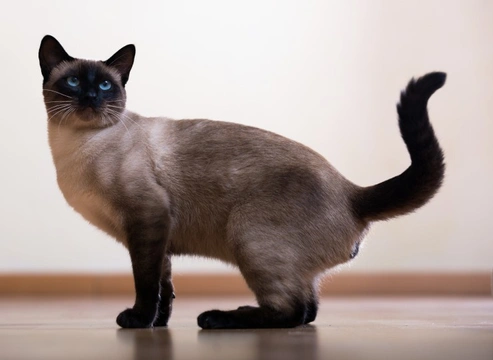
Can Siamese cats be black?
The Siamese cat is a popular oriental breed that has a large following both in the UK and across the world, and that are renowned for their distinctive colour points, which contrast with their white or cream bodies.
The colour points themselves come in a range of different shades, and this is reflected in the Siamese cat’s breed standard, which has expanded over time to encompass new shades and variations of the colour points. Not all of the possible colour point combinations that Siamese cats can be seen in are officially recognised by all registries, however-the original Siamese colour was seal point, and over time the blue, lilac and chocolate shades became accepted too. Now, Siamese cats can be seen with red points, tortie points and other variants too-but the one thing that unites all Siamese cats is the fact that they have darker points on the tail, face and legs, with a light body.
However, the Siamese cat’s colouring and points originates from a certain colour gene called the Himalayan gene, which is a black colour that expresses in the Siamese with a partial albino variant, and that ultimately, led to the breed’s appearance and colouration as we know it today.
That said, you occasionally hear mention of all-black Siamese cats, or Siamese-type cats with all black coats, which poses the question of whether or not a pedigree Siamese cat can actually be all black in colour.
In this article, we will attempt to answer this question and explain a little bit more about the colour heredity of the Siamese cat breed along the way. Read on to learn more.
The Himalayan gene
As mentioned, the Himalayan gene is what causes Siamese cats to have distinct colour points, because in the Siamese cat breed, the Himalayan gene-which causes a black coat-is expressed as partial albinism. This leads to a white or light-coloured body with darker colour points, and in fact, Siamese cats are born white, and only develop their colour points as they get older.
This is because the darker points of the Siamese occur in areas of the body that are cooler-literally, the gene’s expression is activated by changing temperatures. Because kittens in the womb are kept at a stable temperature across their whole bodies, when they are born, they are all white.
As the outside temperature is more variable of course, the core of the cat-the body-is warmer than the extremities-the face, tail and legs-and so the extremities darken while the body stays light.
This is why when female Siamese cats are spayed by shaving the fur and making the incision on the flank (a flank spay) rather than the stomach (a midline spay) they may grow the fur back over the incision site slightly darker than the rest of their body, because it was cooler!
In order to inherit the Himalayan gene, which causes the signature colourpoints, any given kitten or litter needs to inherit it from both of their parents, not just one. This is because the gene is recessive, and would be bred out over time if selective breeding had not lead to the gene becoming more widely spread.
In terms of Siamese cat crossings with other breeds that do not carry the Himalayan gene, the colour results and whether or not the cat has colour points can be variable. The chances of a cross breed litter inheriting the colour points can be determined with the following information:
- If both parent cats carry the Himalayan gene, the litter will have colour points.
- If neither parent cat carries the gene, the litter will not have colour points (unless of course potentially one parent in the crossing is from another breed that has colour points caused by a different gene expression.)
- If one parent carries the gene but the other does not, the resulting litter will not inherit colourpoints, but may become a carrier for the gene, and so, may pass it on to their own offspring.
So, is there any such thing as a black Siamese cat?
Essentially, a seal point Siamese cat is genetically a black cat, although they are not black in colour due to the partial expression of the albinism trait. This is because the seal point colour is actually black, although it often appears to be dark brown rather than pure black.
If you see a cat whose fur is all black but otherwise looks Siamese, you are probably looking at an Oriental cat, which is a large, striking oriental breed with similar features to the Siamese. Another option is the Havana cat, which carries the black gene expressed as a dark brown or black.
Ultimately, a cat that is pure black in colour cannot be a pedigree Siamese-but all of the various oriental breeds and so, their colour genes are genetically fairly close, and so they will share some common ancestry!



